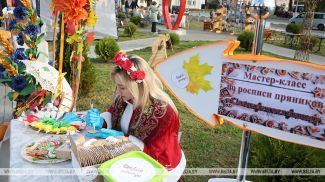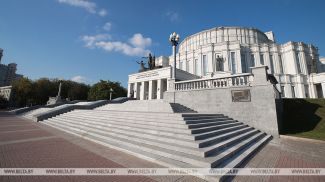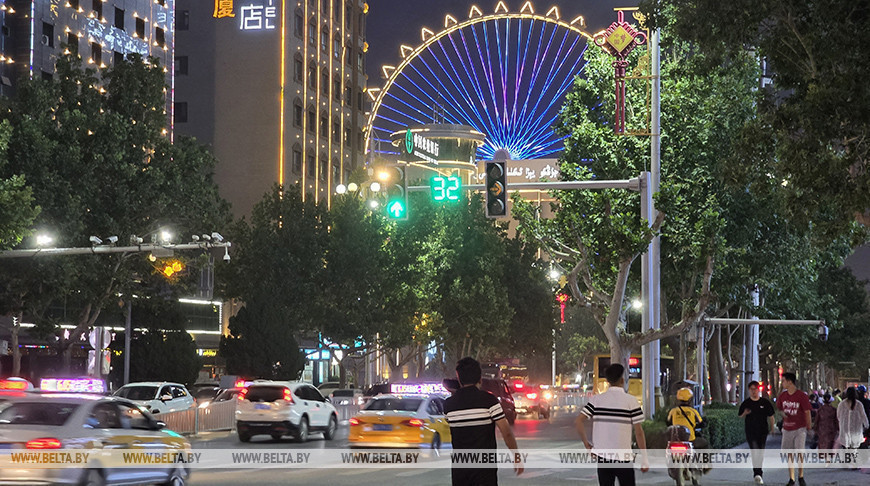
Kashgar, a city in the Xinjiang Uygur Autonomous Region in western China, is unique in many ways. On the one hand, it is a classic Chinese metropolis with a lot of skyscrapers, bright signs and Chinese lanterns along city roads. On the other hand, the old part of the city evokes associations with the Arabic fairy tales "The Thousand and One Nights". Both the new and old Kashgar has something to attract tourists. Here’s our take on the Chinese city where different cultures organically intertwine.
Uyghur
colors on the streets of the old town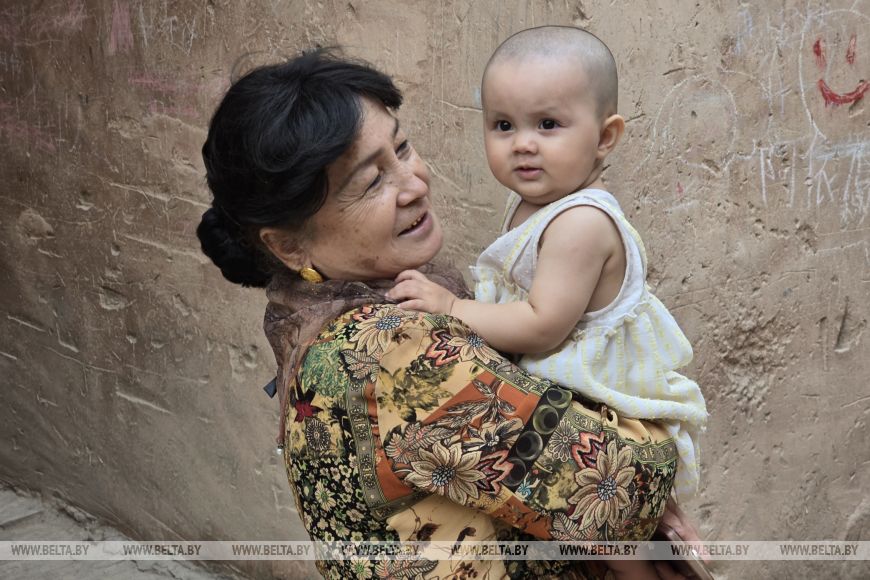
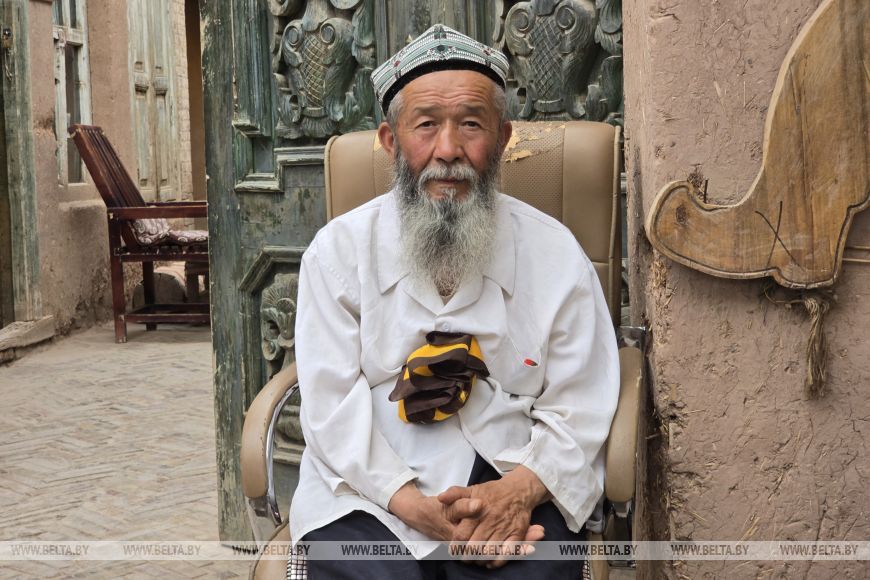 To better understand Kashgar, you need to dive into
the past. During its centuries-old history, this city was under the rule of
various empires - Chinese, Persian, Mongolian… This left an imprint on the city and the
people who live here. Today it is a well-developed center of Uyghur culture
which you see here literally everywhere - the streets, markets, shop windows
and restaurant signs.
To better understand Kashgar, you need to dive into
the past. During its centuries-old history, this city was under the rule of
various empires - Chinese, Persian, Mongolian… This left an imprint on the city and the
people who live here. Today it is a well-developed center of Uyghur culture
which you see here literally everywhere - the streets, markets, shop windows
and restaurant signs. 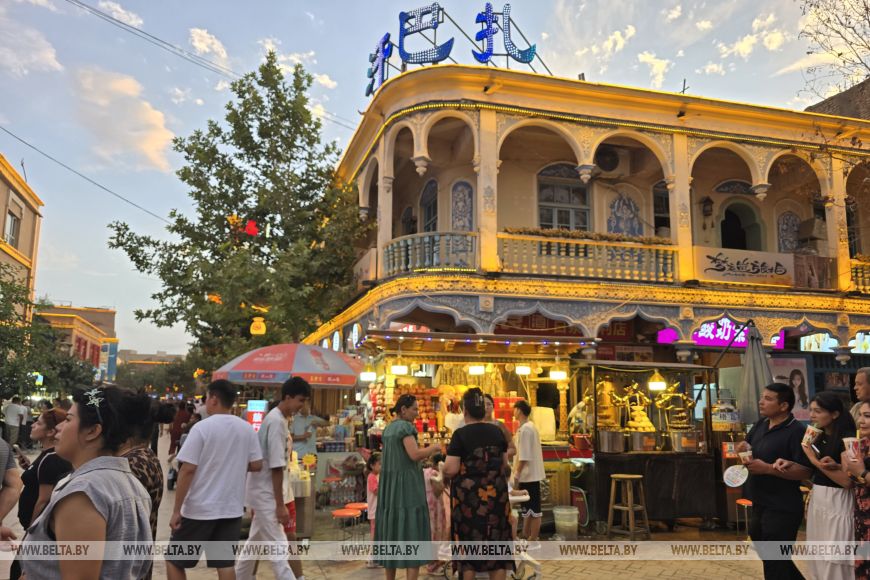 The leadership of the country and the region carefully
preserves the distinctive features of Kashgar. You can see it just by walking
through the streets of the old town. Clay and brick buildings here have
retained their original appearance and are maintained in a good condition. But
to truly immerse yourself in the atmosphere of this city, you need to visit the
night bazaar.
The leadership of the country and the region carefully
preserves the distinctive features of Kashgar. You can see it just by walking
through the streets of the old town. Clay and brick buildings here have
retained their original appearance and are maintained in a good condition. But
to truly immerse yourself in the atmosphere of this city, you need to visit the
night bazaar. 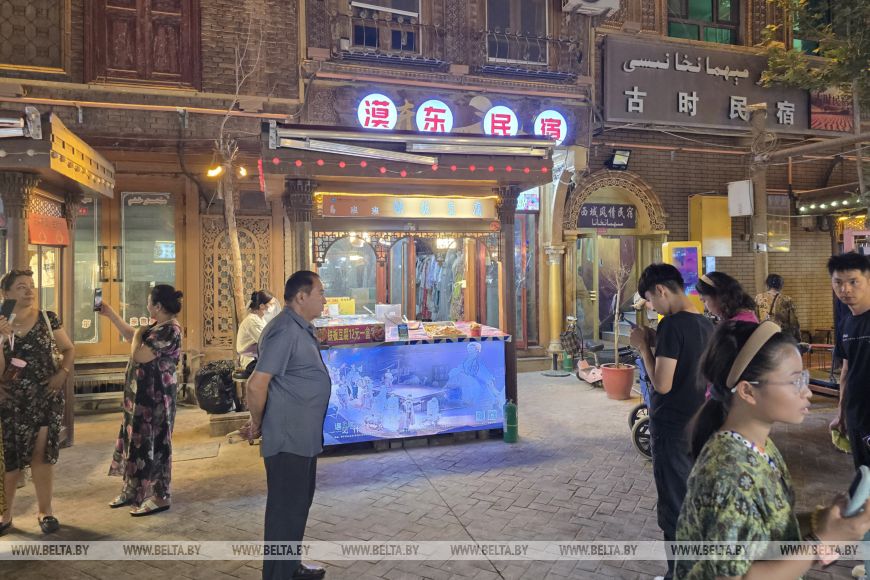 The Kashgar bazaar is markedly different from the
marketplaces familiar to Belarusians. There are almost no clothes for sale here
- except for most colorful shawls and scarves decorated with traditional Uighur
patterns. Residents of the city come here not for shopping but for a pleasant pastime.
Shopping tents offer handmade souvenirs and a rich selection of food and
drinks. Uyghur cuisine can offer treats that are familiar to many Belarusians
since childhood: kebab, pilaf, watermelons, melons, kvass, yogurts…
The Kashgar bazaar is markedly different from the
marketplaces familiar to Belarusians. There are almost no clothes for sale here
- except for most colorful shawls and scarves decorated with traditional Uighur
patterns. Residents of the city come here not for shopping but for a pleasant pastime.
Shopping tents offer handmade souvenirs and a rich selection of food and
drinks. Uyghur cuisine can offer treats that are familiar to many Belarusians
since childhood: kebab, pilaf, watermelons, melons, kvass, yogurts…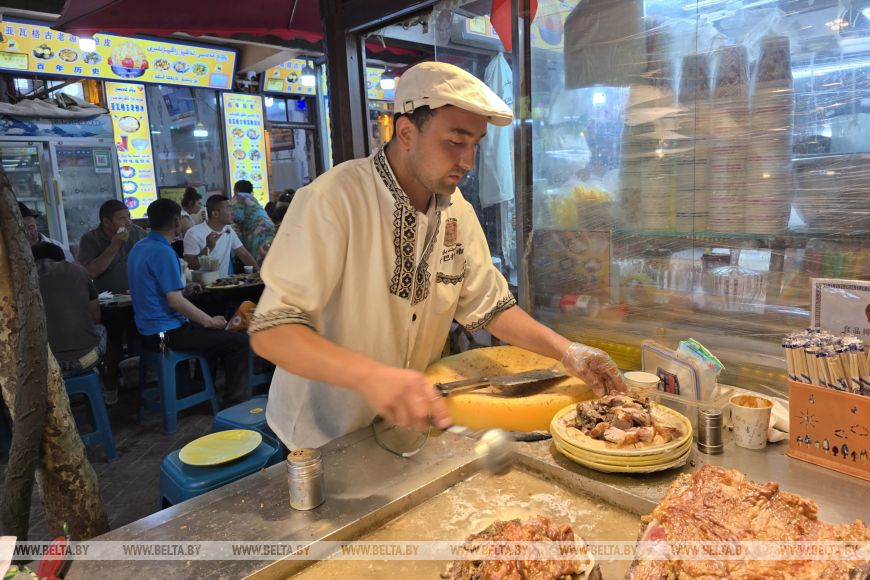 Speaking of yogurt. In Kashgar serving yogurt is a
lively spectacle as vendors toss it high into the air before catching it and
mixing it with ice and honey. Tourists are filming the yoghurt making process to share it with friends later. You don’t get to see this kind of thing often.
Speaking of yogurt. In Kashgar serving yogurt is a
lively spectacle as vendors toss it high into the air before catching it and
mixing it with ice and honey. Tourists are filming the yoghurt making process to share it with friends later. You don’t get to see this kind of thing often.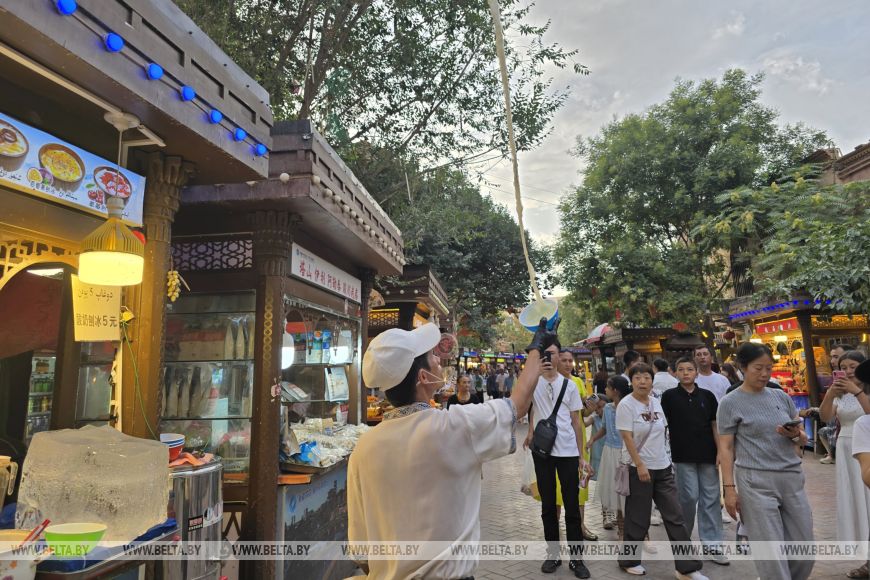 But the Old City attracts tourists not only in the evenings. In the morning, a crowd of people also gathers at the eastern gate. The gate opening ceremony is held every day, featuring ethnic music and dance performances. Actors dressed in national costumes re-enact short episodes from the history of Kashgar in front of the audience. It is not surprising that it is a popular attraction for visitors, as the opening of the gate is done in great style.
But the Old City attracts tourists not only in the evenings. In the morning, a crowd of people also gathers at the eastern gate. The gate opening ceremony is held every day, featuring ethnic music and dance performances. Actors dressed in national costumes re-enact short episodes from the history of Kashgar in front of the audience. It is not surprising that it is a popular attraction for visitors, as the opening of the gate is done in great style.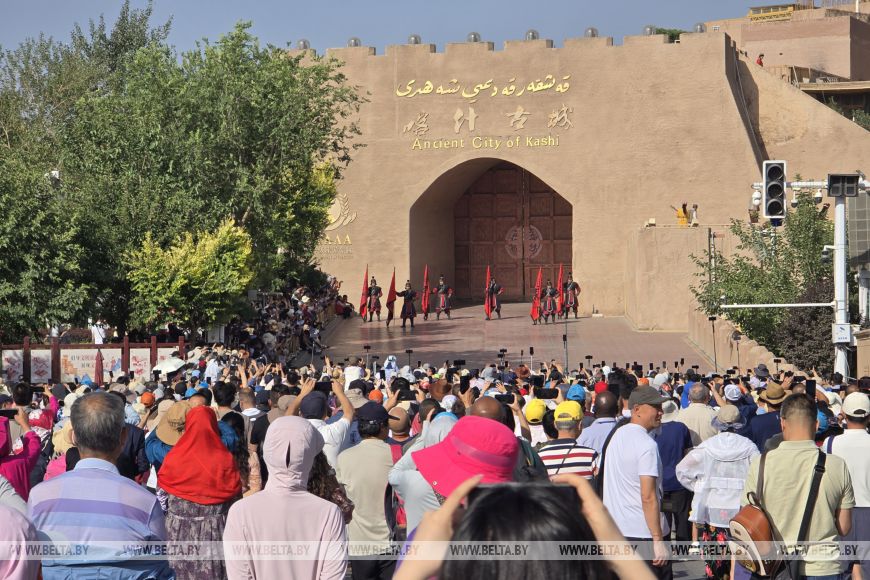 The presence of Uyghurs wearing traditional clothing adds a unique cultural flavor to the Old City. A gray-haired bearded man in a skullcap catches the eye. The elderly man simply sits in a chair and looks at people passing by. They say he is very popular on TikTok. Children who live in the Old City roam and play nearby. Girls in bright Uyghur dresses pose for photographers or just take selfies. It is quite understandable why this place is so popular with tourists - visitors can fully immerse themselves in the vibrant local life.
The presence of Uyghurs wearing traditional clothing adds a unique cultural flavor to the Old City. A gray-haired bearded man in a skullcap catches the eye. The elderly man simply sits in a chair and looks at people passing by. They say he is very popular on TikTok. Children who live in the Old City roam and play nearby. Girls in bright Uyghur dresses pose for photographers or just take selfies. It is quite understandable why this place is so popular with tourists - visitors can fully immerse themselves in the vibrant local life.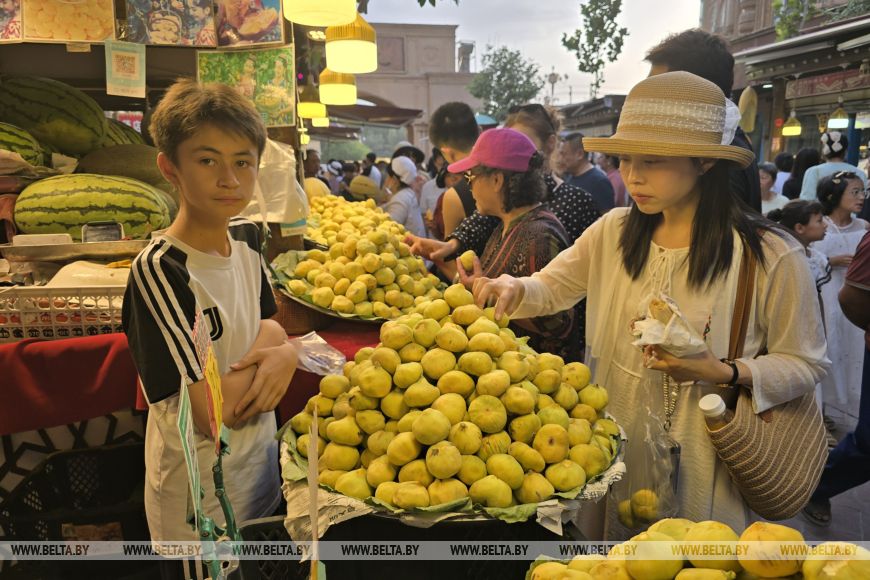
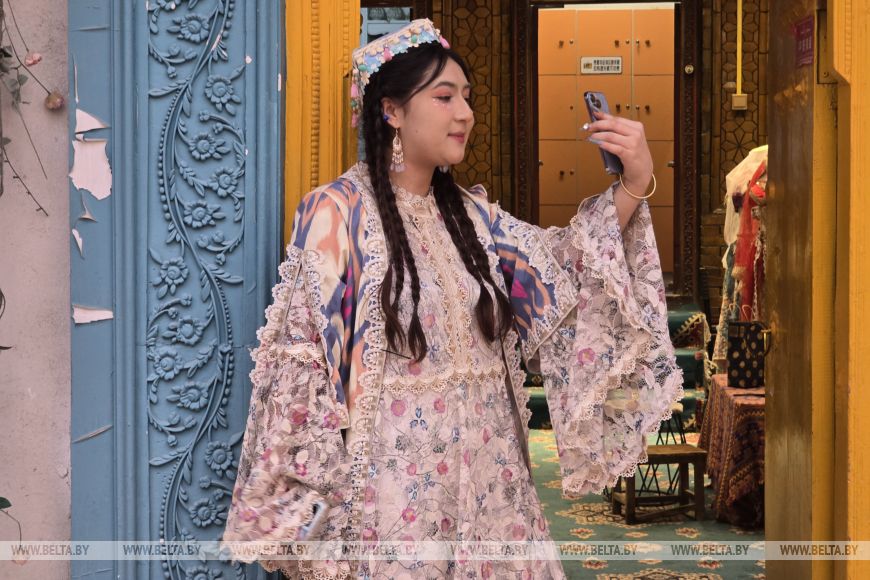 A huge statue of Mao Zedong and the People’s Park
A huge statue of Mao Zedong and the People’s Park
“Why are there so many mopeds here?” - this thought comes to mind during a ride along the streets of the New City. This mode of transportation is used by everyone here: young people, middle-aged people, pensioners. Mopeds are used not only to get from point A to point B, but also to transport goods - for example, carts with melons. I ask my Chinese colleagues why mopeds are so popular in Kashgar. It turns out that they are inexpensive to rent - like bicycles or electric scooters. Therefore, the locals often use them to get to work, to a store or to run errands.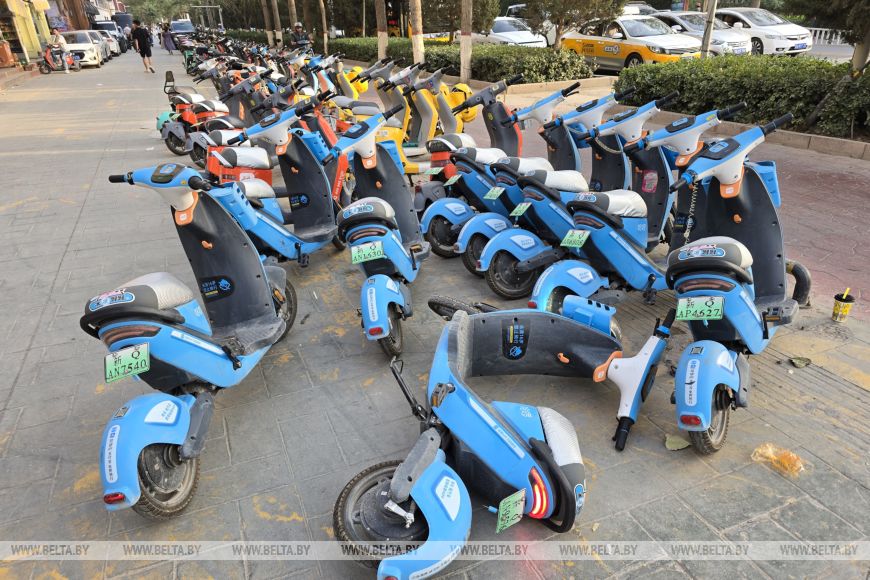 From the bus window I spot a huge statue and recognize Mao Zedong. I double check with my colleagues and they confirm that it’s Chairman Mao (we communicate in English). The Chinese comrades speak of the founder and first leader of the PRC with exceptional respect. In general, all the Chinese with whom I crossed paths demonstrated love, interest and respect for their history.
From the bus window I spot a huge statue and recognize Mao Zedong. I double check with my colleagues and they confirm that it’s Chairman Mao (we communicate in English). The Chinese comrades speak of the founder and first leader of the PRC with exceptional respect. In general, all the Chinese with whom I crossed paths demonstrated love, interest and respect for their history.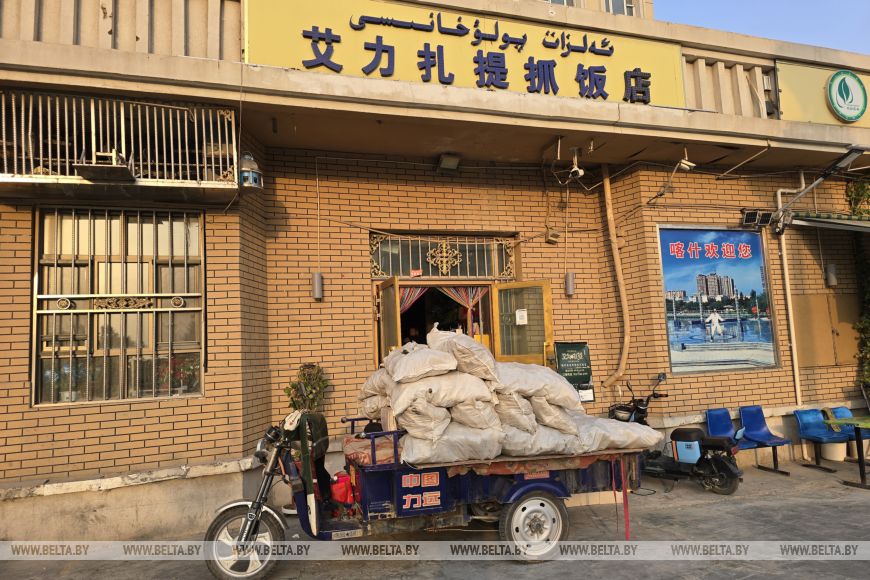 With his right hand, Mao gestures towards the park stretching out on the other side of the road, as if inviting the residents and guests of Kashgar to enter. Why not accept the invitation?
With his right hand, Mao gestures towards the park stretching out on the other side of the road, as if inviting the residents and guests of Kashgar to enter. Why not accept the invitation?
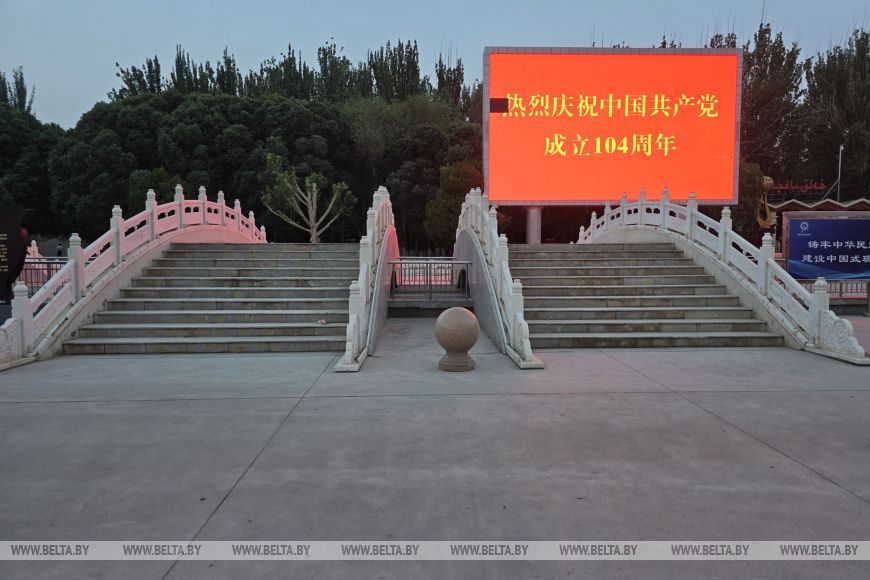 The square with the statue of Chairman Mao Zedong is called People’s Square, and the park he gestures towards from his tall pedestal is called People’s Park. It is an atmospheric place with dim lighting, soft Chinese music, and comfortable benches. Here visitors can spend time alone, gather their thoughts, and simply escape the bustle of daily life.
The square with the statue of Chairman Mao Zedong is called People’s Square, and the park he gestures towards from his tall pedestal is called People’s Park. It is an atmospheric place with dim lighting, soft Chinese music, and comfortable benches. Here visitors can spend time alone, gather their thoughts, and simply escape the bustle of daily life.
In fact, many locals do that. On one of the park’s paths, I noticed three older women practicing exercises. As it turned out, they were practicing taijiquan, a type of martial art. Despite their age, the women moved their weight gracefully from one foot to the other, moved their arms as if catching an invisible ball, and focused intently on their breathing.
The scene was fascinating, so I sat on a bench for a while, watching them with interest. Passing Chinese and Uyghurs paid no attention to the women. Apparently, it’s something quite ordinary and natural to them.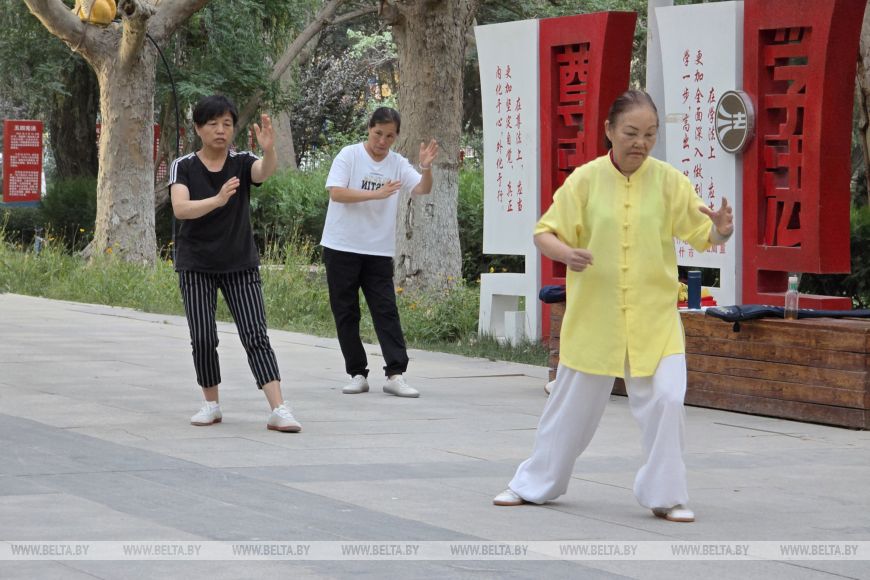 One of the largest mosques in China
One of the largest mosques in China
The Uyghurs are predominantly Muslim, and it’s natural that places of worship are essential for gatherings and prayer. Kashgar is home to one of the largest mosques in all of China: the Id Kah Mosque. Built in 1442, the mosque has been expanded several times over the centuries. Tourists are advised to visit early in the morning or late in the evening on Fridays, when the atmosphere of special rituals is most palpable and the scorching sun can be avoided.
The mosque’s interior hall is covered with handmade wool carpets, and visitors must enter without shoes. In the central courtyard, there is a purification pool, surrounded by numerous corridors and lecture halls, and flanked to the north and south by majestic century-old poplar trees.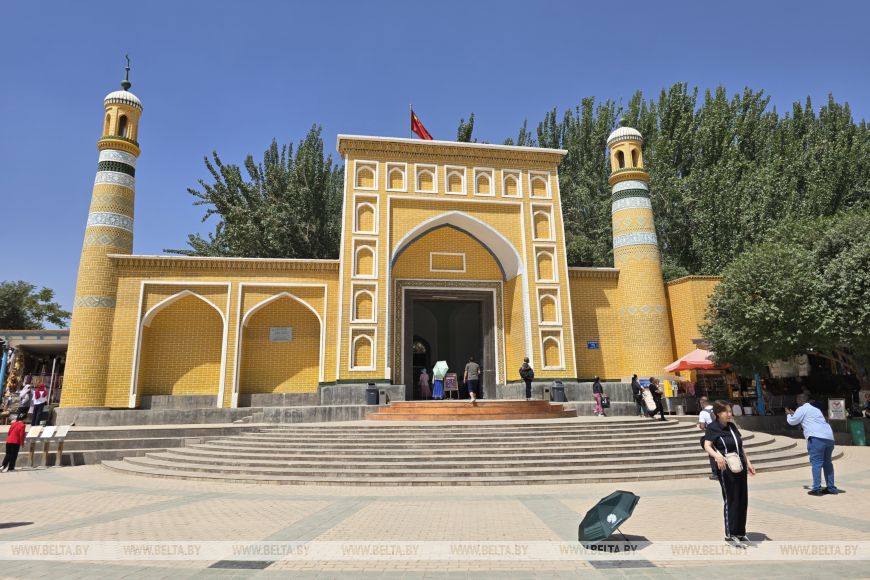
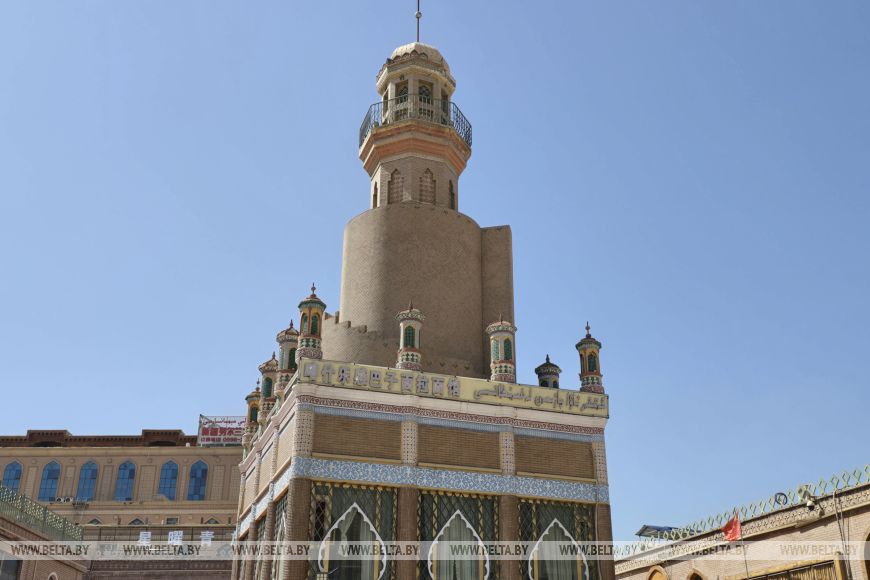 All of this cultural heritage is protected by the state. Evidence of this can be found in the Comprehensive Management Memorial Hall for the Protection of the Old Town of Kashi City, where visitors can explore the detailed history of Kashgar, a city that hasn’t always been as flourishing and developed as it appears to tourists today.
All of this cultural heritage is protected by the state. Evidence of this can be found in the Comprehensive Management Memorial Hall for the Protection of the Old Town of Kashi City, where visitors can explore the detailed history of Kashgar, a city that hasn’t always been as flourishing and developed as it appears to tourists today.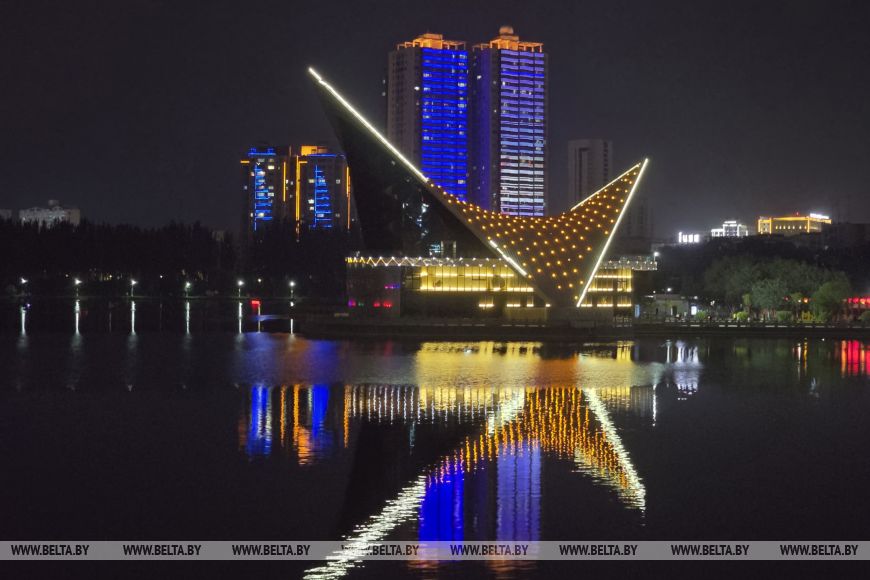
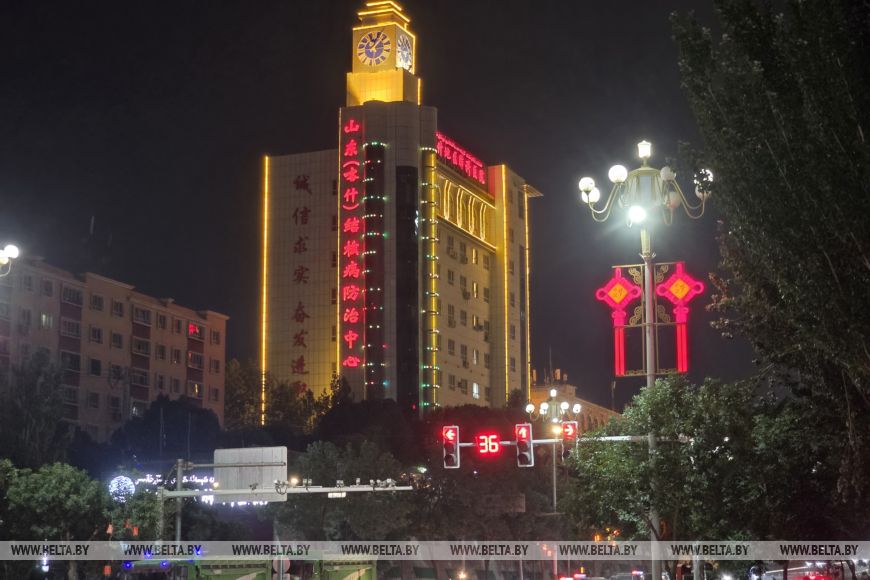 Andrei VOROPAI,
Andrei VOROPAI,







